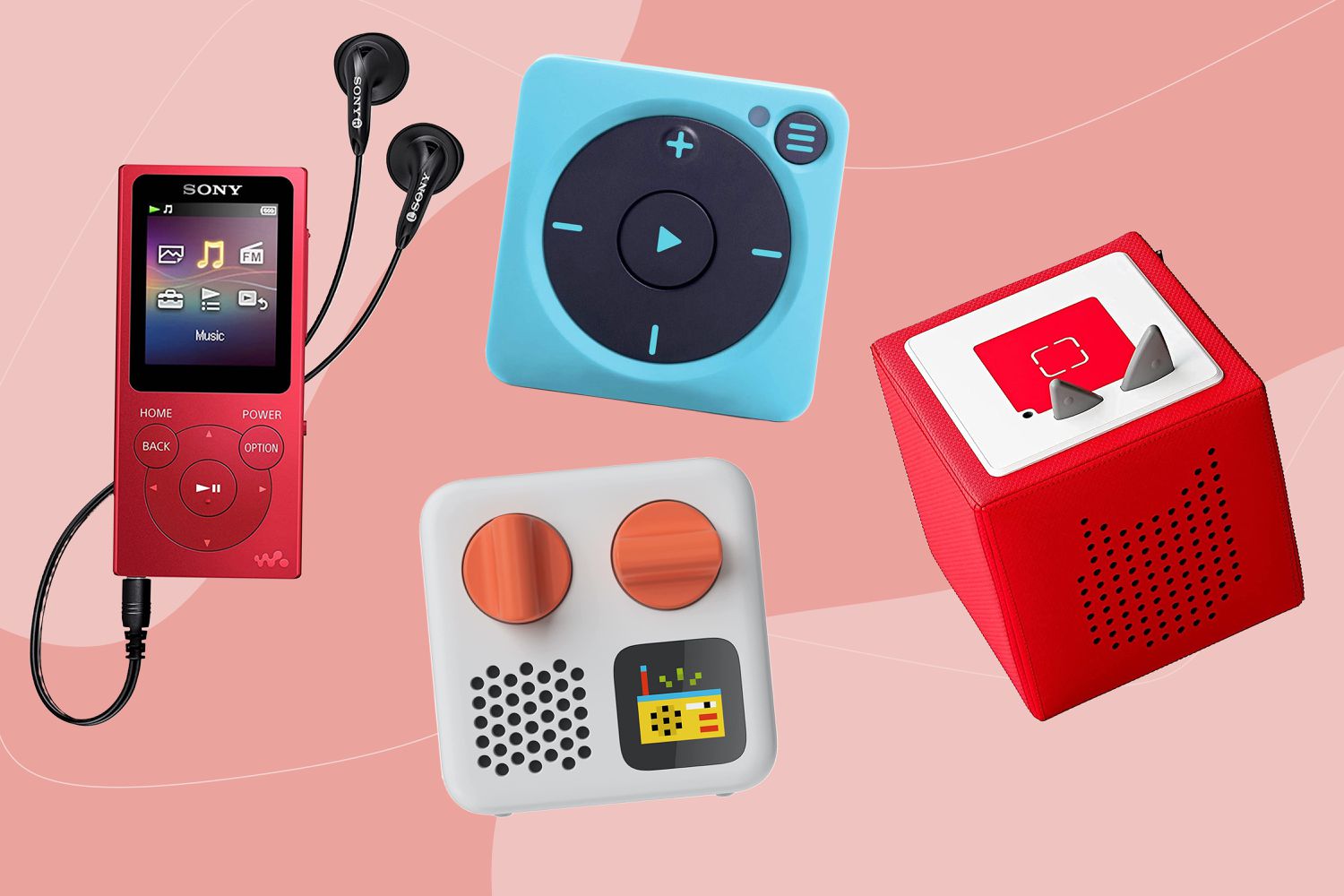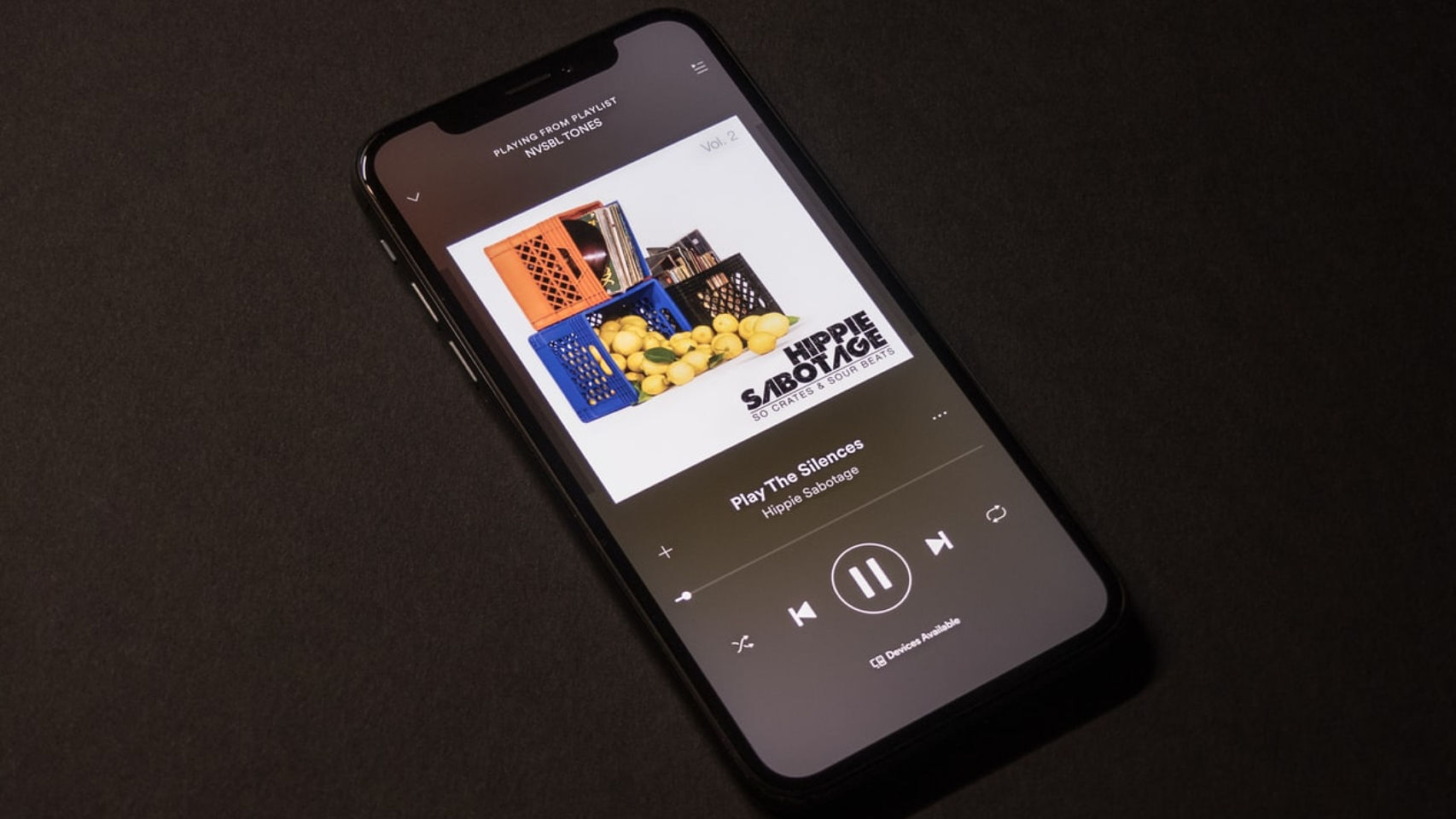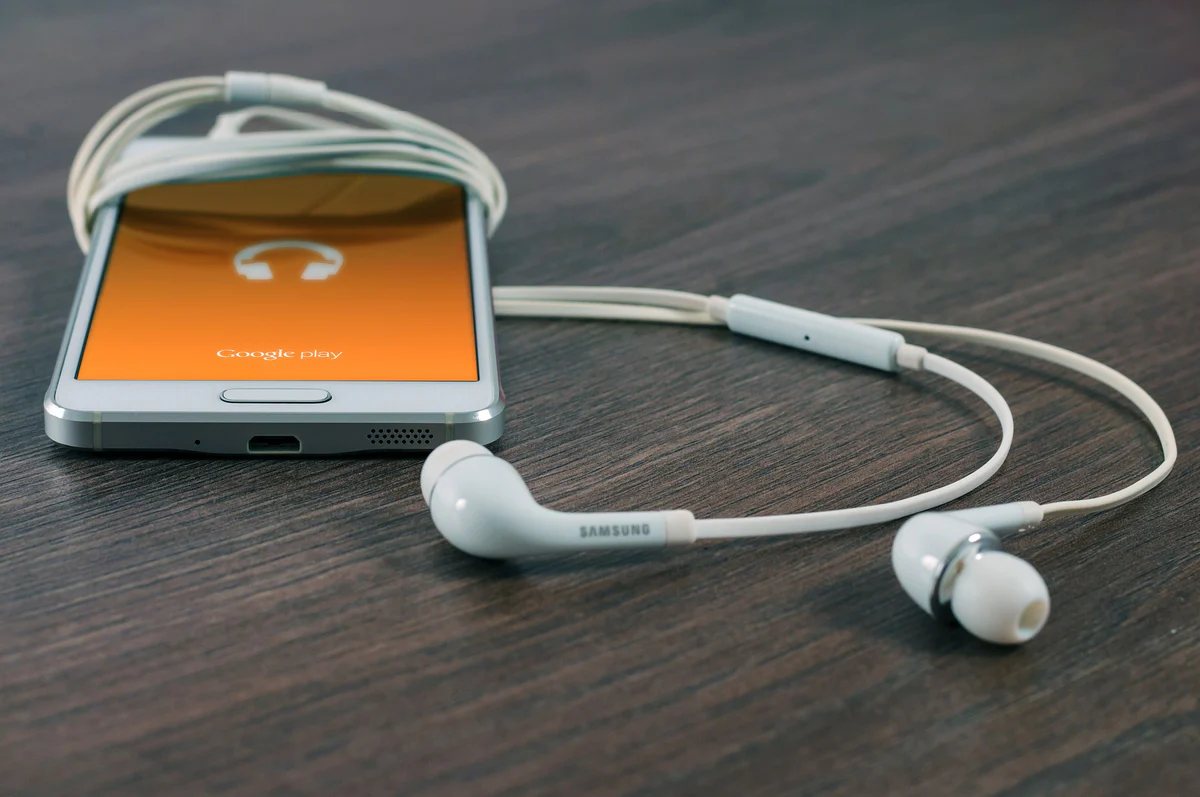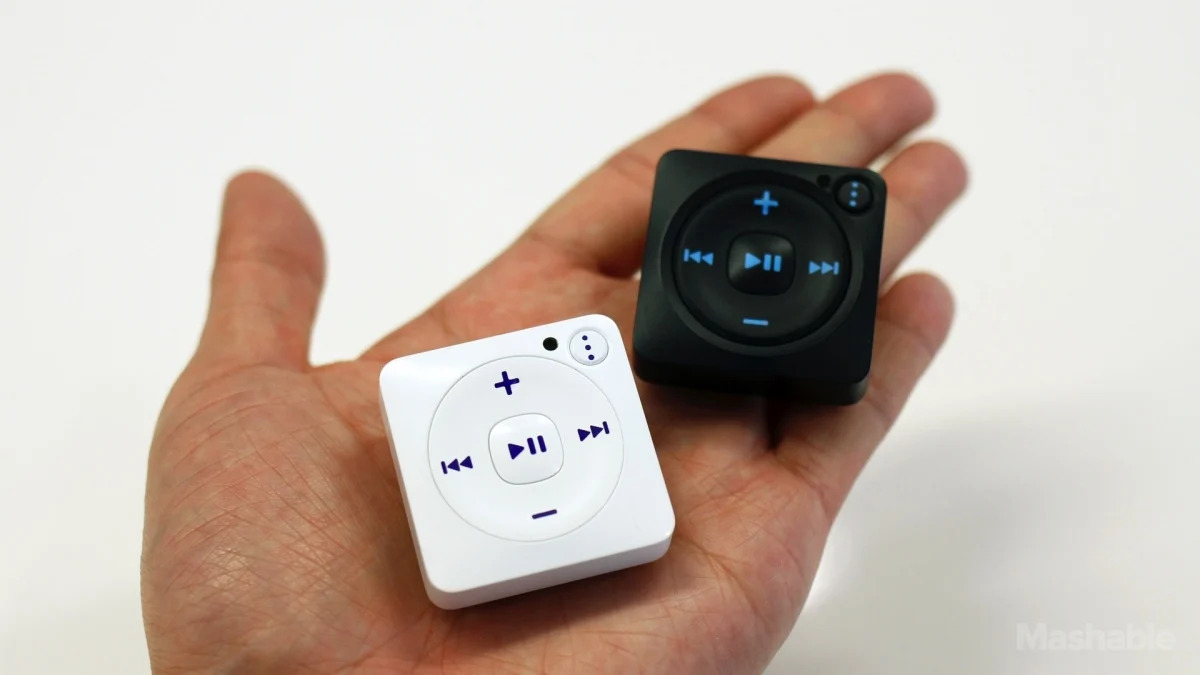Home>Production & Technology>MP3>How To Download Audiobooks To MP3 Player
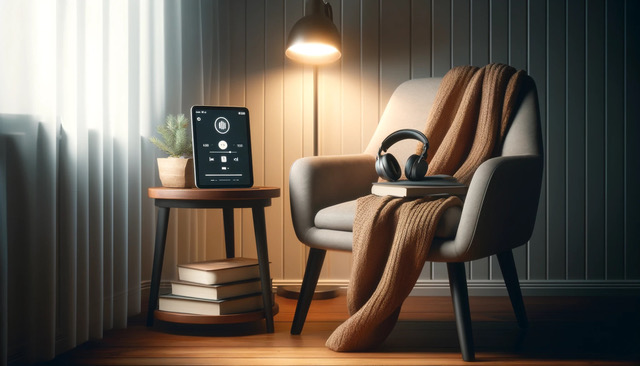

MP3
How To Download Audiobooks To MP3 Player
Modified: January 22, 2024
Learn how to easily download audiobooks to your MP3 player and enjoy listening on the go. Simple steps and tips to get your MP3 player filled with your favorite audiobooks.
(Many of the links in this article redirect to a specific reviewed product. Your purchase of these products through affiliate links helps to generate commission for AudioLover.com, at no extra cost. Learn more)
Table of Contents
Introduction
Welcome to the world of audiobooks, where you can enjoy thrilling stories, enlightening non-fiction, and captivating performances anytime, anywhere. While streaming services are convenient, having your audiobooks downloaded to an MP3 player gives you the freedom to listen without relying on an internet connection. In this article, we will guide you through the step-by-step process of downloading audiobooks to your MP3 player.
Before we dive into the technical details, let’s first ensure you have the right MP3 player for the job. There are a plethora of options available, from standalone MP3 players to smartphones and even smartwatches. It’s important to choose a device that has sufficient storage capacity and supports the necessary file formats.
Once you have the perfect MP3 player, the next step is to find reliable audiobook sources. You want to make sure you have access to a wide range of titles and a reputable provider that offers high-quality downloads. Don’t worry, we’ll provide you with some great resources later on.
Downloading audiobooks can be done through your computer, so you’ll need to have a reliable internet connection and some basic computer skills. We’ll guide you through the process of finding and downloading your desired audiobooks to your computer.
Transferring the downloaded audiobooks to your MP3 player is the next crucial step. This requires connecting your device to your computer and transferring the files. We’ll walk you through this process to ensure a seamless transfer.
Lastly, we’ll cover some tips on organizing and managing your audiobooks on your MP3 player. This will help you keep track of your collection and make it easy to find your desired title when you’re in the mood for a new adventure.
So, whether you’re a bookworm looking to maximize your reading time or someone who simply wants to enjoy a good story on the go, this article is for you. Let’s get started with step one: choosing the right MP3 player!
Step 1: Choosing the Right MP3 Player
When it comes to selecting the right MP3 player for downloading and listening to audiobooks, there are a few factors to consider. Here are some key points to help you make an informed decision:
- Storage Capacity: The first thing you’ll want to look for is ample storage capacity. Audiobooks can take up quite a bit of space, so make sure the MP3 player you choose has enough room to store your desired collection. Consider the size of the audiobooks you typically listen to and opt for a device with sufficient storage space, whether it’s built-in or expandable with a memory card.
- File Format Support: Audiobook files come in various formats, such as MP3, M4B, and WMA. Check to see if the MP3 player you’re considering supports the file format of the audiobooks you intend to download. Most modern MP3 players are compatible with popular file formats, but it’s always best to double-check.
- Battery Life: Long-lasting battery life is essential, especially if you plan to listen to audiobooks for extended periods. Look for an MP3 player with a battery that can withstand your listening needs. It’s also worth considering whether the device has a quick charging feature to minimize downtime.
- User-Friendly Interface: A user-friendly interface can greatly enhance your experience with an MP3 player. Look for a device that has easy navigation, intuitive controls, and a clear screen for displaying metadata such as book titles and chapters. A responsive interface will make it easier to find and manage your audiobooks.
- Connectivity Options: Consider how you plan to transfer content to your MP3 player. Some devices offer Bluetooth connectivity, which allows for wireless transfer from your computer or smartphone. Others may require a USB connection. Choose an MP3 player that aligns with your preferred method of content transfer.
- Additional Features: While not essential, additional features can enhance your overall experience. Look for features like bookmarks, adjustable playback speed, equalizer settings, and compatibility with audiobook-specific applications or platforms.
By considering these factors and evaluating your personal preferences, you’ll be able to choose an MP3 player that meets your specific needs. Once you have the perfect device in hand, you’ll be ready to move on to the next step: finding reliable audiobook sources.
Step 2: Finding Reliable Audiobook Sources
Now that you have your MP3 player, it’s time to find reliable sources for downloading audiobooks. Here are some ways to discover high-quality and diverse audiobook options:
- Audible: Audible is one of the most popular and well-established audiobook platforms. They offer a vast library with various genres and a wide range of narrators. Audible offers a paid subscription service with monthly credits that allow you to download audiobooks. They also provide a free trial period for new users, so you can explore the platform before committing.
- Libraries: Many public libraries have embraced digital audiobooks and offer lending programs through platforms like OverDrive or Libby. With a library card, you can borrow audiobooks for a specific period and download them to your MP3 player. Check your local library’s website to see what digital lending services they offer.
- Free Audiobook Websites: Several websites offer free audiobook downloads, often with books in the public domain or those contributed by independent authors. Librivox and Project Gutenberg are two popular websites that provide a vast collection of free audiobooks. While the selection may not be as extensive as paid platforms, these websites are a great option for exploring classic literature and lesser-known titles.
- Paid Audiobook Websites: In addition to Audible, there are other paid audiobook platforms such as Apple Books, Google Play Audiobooks, and Audiobooks.com. These platforms often offer a wide range of titles, including bestsellers, new releases, and niche genres. Some may require a subscription, while others offer a pay-per-book model. Explore these platforms to find the one that suits your preferences and budget.
- Publisher Websites: Some publishers have their own websites or direct-to-consumer platforms that offer audiobook downloads. If you have favorite authors or publishers, check their websites to see if they offer audiobooks for sale or download. This is a great way to support authors directly and discover exclusive content.
Remember to consider the format compatibility with your MP3 player when choosing an audiobook source. Most platforms offer audiobooks in common formats like MP3 or M4B, but it’s always wise to verify before making a purchase or committing to a subscription.
Now that you have an arsenal of audiobook sources at your disposal, you’re ready to move on to step three: downloading audiobooks to your computer. Stay tuned for the next section where we’ll guide you through the process!
Step 3: Downloading Audiobooks to Your Computer
With your MP3 player ready and reliable audiobook sources in mind, it’s time to download your desired audiobooks to your computer. Follow these steps to ensure a smooth downloading process:
- Select Your Audiobook: Choose the audiobook you wish to download from your preferred source. Make sure to check any details like the abridged or unabridged version, the narrator, and the file format. Add the audiobook to your cart or click the download button, depending on the platform.
- Check Download Format: Before proceeding with the download, ensure that the audiobook is available in a compatible format for your MP3 player. Most platforms offer the option to download in MP3 format, which is widely supported. If your device requires a specific format like M4B, make sure the platform provides that option.
- Follow the Download Instructions: Once you’ve confirmed the format compatibility, follow the instructions provided by the audiobook platform. They may guide you to a download button or a specific file location. In some cases, a download manager may be required, so make sure to install any necessary software or plugins as instructed.
- Choose a Download Location: During the download process, you will be prompted to choose a location to save the audiobook files on your computer. Create a designated folder for audiobooks or select an existing one where you want to store your downloaded files. This will make it easier to locate and transfer the files to your MP3 player later.
- Monitor the Download: Depending on the size of the audiobook and your internet connection speed, the download may take some time. Keep an eye on the progress to ensure it completes successfully. Avoid interrupting the download process or shutting down your computer before it finishes.
- Verify the Downloaded Files: Once the download is complete, verify that the downloaded files are intact and error-free. Check that all chapters or sections of the audiobook are present and playable. Play a sample segment to ensure the audio quality is satisfactory.
Once you have successfully downloaded and verified your audiobook files on your computer, you’re ready for the next step: transferring audiobooks to your MP3 player. Stay tuned for step four, where we’ll guide you through the process of transferring your downloaded audiobooks to your MP3 player.
Step 4: Transferring Audiobooks to Your MP3 Player
Now that you have your audiobooks downloaded to your computer, it’s time to transfer them to your MP3 player for convenient on-the-go listening. Follow these steps to ensure a seamless transfer:
- Connect Your MP3 Player: Using the appropriate cable, connect your MP3 player to your computer. Make sure both devices are powered on and properly connected. Depending on your MP3 player, you may need to use a USB cable or connect via Bluetooth.
- Locate Your MP3 Player on Your Computer: Once connected, your computer should recognize your MP3 player as an external device. It may appear as a drive in file explorer or as a connected device in software specific to your MP3 player. Locate your MP3 player’s directory or software interface on your computer.
- Create a Folder for Audiobooks: Within your MP3 player’s directory or interface, create a new folder specifically for your audiobook files. Name it something intuitive like “Audiobooks” or “Books” to easily identify it later.
- Transfer Audiobook Files: From your computer’s file explorer, navigate to the folder where your downloaded audiobook files are stored. Select the audiobook files you want to transfer to your MP3 player, and then copy and paste or drag and drop them into the newly created “Audiobooks” folder on your MP3 player.
- Wait for the Transfer to Complete: The time it takes to transfer the audiobook files will depend on the size of the files and the speed of your connection. Be patient and allow the transfer to complete without interrupting the process.
- Eject Your MP3 Player: Once the transfer is complete, safely eject your MP3 player from your computer. This ensures that all files are properly written and prevents any data corruption. Follow the appropriate procedure for your operating system to eject the device safely.
Now that you have successfully transferred your audiobook files to your MP3 player, you can disconnect it from your computer. Your MP3 player should now have the audiobooks ready for you to enjoy at your convenience.
In the next and final step, we’ll cover some tips on organizing and managing your audiobooks on your MP3 player. Stay tuned!
Step 5: Organizing and Managing Audiobooks on Your MP3 Player
Now that your audiobooks are successfully transferred to your MP3 player, it’s important to organize and manage them for easy access and a seamless listening experience. Follow these tips to keep your audiobooks organized:
- Create Folders or Playlists: Depending on the capabilities of your MP3 player, consider creating folders or playlists to categorize your audiobooks. You can create separate folders for different genres, authors, or series. Alternatively, create playlists based on your preferences or mood, such as “Favorites” or “To Listen Next.” This will make it easier to find specific audiobooks quickly.
- Use Descriptive Filenames: When transferring your audiobooks, ensure that the filenames are descriptive and provide relevant information about the book, such as the title, author, and narrator. This will make it easier to identify audiobooks at a glance, especially if your MP3 player displays metadata or supports text-based file browsing.
- Tag Your Audiobook Files: Some MP3 players support tagging, which allows you to add metadata to your audiobook files. Take advantage of this feature by adding tags such as genre, author, narrator, or series. This will enhance the searchability and organization of your audiobooks directly on the MP3 player.
- Arrange Audiobooks in Sequential Order: If you’re listening to a series or a book with multiple parts, it’s essential to arrange the files in the correct order. Ensure that the files are sorted alphabetically or numerically, depending on the naming convention used. This way, you can easily follow the narrative without confusion.
- Remove Unwanted Audiobooks: Periodically review your audiobook collection on your MP3 player to remove any duplicates or audiobooks you’ve already listened to. This will free up storage space and make navigating through your library more efficient.
- Make Use of Bookmarking: Many MP3 players offer bookmarking features that allow you to save your progress within an audiobook. Take advantage of this feature to easily resume listening from where you left off, even if you switch between different audiobooks or exit the player.
- Consider Audiobook Management Apps: If your MP3 player supports third-party applications, explore audiobook management apps that can further enhance your organization and listening experience. These apps often provide advanced features like syncing across devices, automatic bookmarking, and customizable playback settings.
By implementing these organizational strategies, you can enjoy a streamlined and enjoyable audiobook experience on your MP3 player. Whether you prefer to browse by folders, playlists, or tags, finding and listening to your favorite audiobooks will be a breeze.
Congratulations, you’ve now successfully organized your audiobooks on your MP3 player! With everything in order, you can immerse yourself in captivating stories wherever you go. Happy listening!
That concludes our step-by-step guide on how to download and manage audiobooks on your MP3 player. We hope you found this article helpful and that you enjoy countless hours of literary adventures. Remember to stay updated with new releases and explore different genres to expand your audiobook library. Happy listening!
Conclusion
Congratulations! You have reached the end of this comprehensive guide on how to download and manage audiobooks on your MP3 player. By following the steps outlined in this article, you can now enjoy a vast collection of audiobooks at your fingertips, ready to transport you into captivating narratives, insightful non-fiction, and thrilling performances.
We started by helping you choose the right MP3 player, emphasizing factors like storage capacity, file format support, battery life, user-friendly interface, and connectivity options. Then, we explored reliable sources for downloading audiobooks, including popular platforms like Audible, library lending programs, free audiobook websites, paid audiobook platforms, and publisher websites.
Next, we guided you through the process of downloading audiobooks to your computer, ensuring that you selected the correct format and followed the provided instructions. We emphasized the importance of monitoring the download progress and verifying the downloaded files for a smooth listening experience.
Transferring your downloaded audiobooks to your MP3 player was the fourth step, involving connecting the device to your computer, creating a dedicated folder for audiobooks, and transferring the files. We highlighted the importance of safely ejecting your MP3 player to prevent data corruption.
Finally, we discussed the importance of organizing and managing your audiobooks on your MP3 player. We provided tips on creating folders or playlists, using descriptive filenames and tags, arranging audiobooks in sequential order, removing unwanted files, making use of bookmarking features, and considering audiobook management apps.
Now that you have successfully completed all the steps, you can fully enjoy your audiobooks on your MP3 player. Immerse yourself in captivating stories during your daily commute, while exercising, or when you simply want to relax and indulge in some literary entertainment.
Remember to periodically update your audiobook collection, explore new genres and authors, and take advantage of any new features and technologies offered by your MP3 player. The world of audiobooks is vast, and there are endless adventures waiting to be discovered.
Thank you for joining us on this journey to enhance your audiobook experience. We hope this guide has been informative and helpful. Happy listening!

